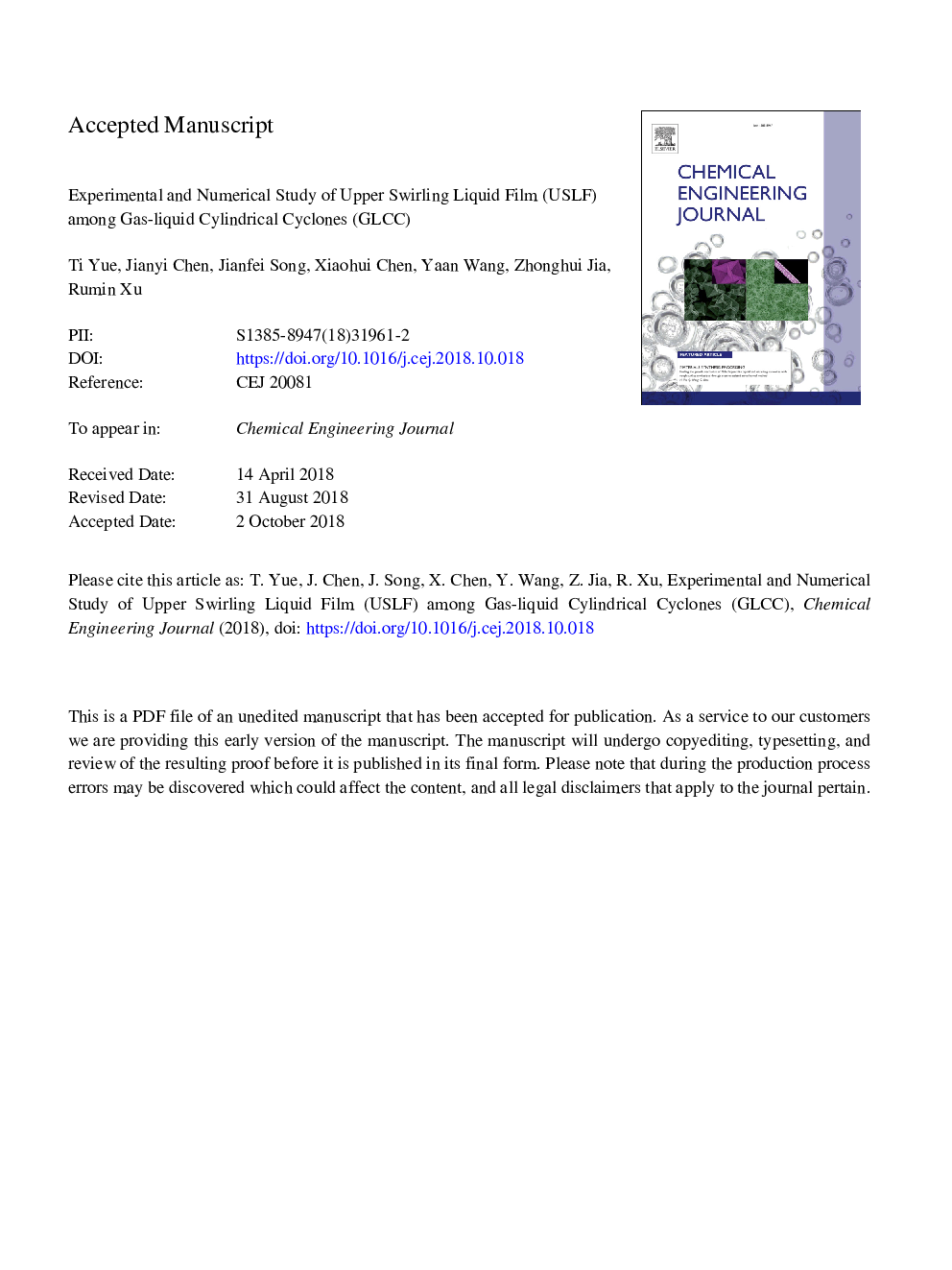| کد مقاله | کد نشریه | سال انتشار | مقاله انگلیسی | نسخه تمام متن |
|---|---|---|---|---|
| 11263171 | 1774266 | 2019 | 51 صفحه PDF | دانلود رایگان |
عنوان انگلیسی مقاله ISI
Experimental and numerical study of Upper Swirling Liquid Film (USLF) among Gas-Liquid Cylindrical Cyclones (GLCC)
دانلود مقاله + سفارش ترجمه
دانلود مقاله ISI انگلیسی
رایگان برای ایرانیان
کلمات کلیدی
موضوعات مرتبط
مهندسی و علوم پایه
مهندسی شیمی
مهندسی شیمی (عمومی)
پیش نمایش صفحه اول مقاله

چکیده انگلیسی
Today's subsea oil & gas production systems and marine production platforms are in urgent need of a more compact, high-efficient gas-liquid separator. The Gas-Liquid Cylindrical Cyclone (GLCC) employs the coupled effects of centrifugal force and gravity to separate gas and liquid. It has been reported that the GLCC is possibly the only separator available in subsea conditions. However, there are two hindering factors to the GLCC's separation performance. They are Liquid Carry-over (LCO) and Gas Carry-under (GCU). The Upper Swirling Liquid Film (USLF) that exists in the upper cylinder of the GLCC is believed to be a direct source of the LCO. This study attempted to explain the flow regimes and flow behavior of the USLF using experimental and simulated methods. Firstly, four kinds of fluids (water, 35% aqueous glycerin, 49.6% aqueous glycerin and Therminol 55) were used to test the performance of an ID-74â¯mm GLCC at different gas-liquid throughputs. The gas volumetric flow rates ranged from 100â¯m3/h to 200â¯m3/h and the liquid flow rates from 0.6â¯m3/h to 2.7â¯m3/h. Four flow regimes of USLF were defined based on the experimental observations. They were swirling flow, churn flow, annular flow and ribbon flow, respectively. Flow pattern maps for them were constructed. Secondly, an Eulerian Wall Film (EWF) model was used to numerically study the effect of fluid properties and operational conditions on the flow behavior of the USLF. It was found that the film height grew with the increase of the gas flow rates and the distribution of the film thickness became less uniform with the increase of the liquid flow rates. A liquid with low surface tension and high viscosity usually produced an unfavorable annular flow regime. Thirdly, based on the mechanistic analysis of the film flow, the flow in the upper cylinder was divided into three segments: the centrifugal segment, the drag-up segment and the escaped segment. A judgment model was established for the flow regimes of USLF after combining with the flooding theory. Finally, the action of USLF on LCO phenomenon was divided into three stages: safety stage, deteriorating stage and stable stage. They corresponded to the flow regimes of swirl flow, churn flow and annular flow respectively.
ناشر
Database: Elsevier - ScienceDirect (ساینس دایرکت)
Journal: Chemical Engineering Journal - Volume 358, 15 February 2019, Pages 806-820
Journal: Chemical Engineering Journal - Volume 358, 15 February 2019, Pages 806-820
نویسندگان
Ti Yue, Jianyi Chen, Jianfei Song, Xiaohui Chen, Yaan Wang, Zhonghui Jia, Rumin Xu,